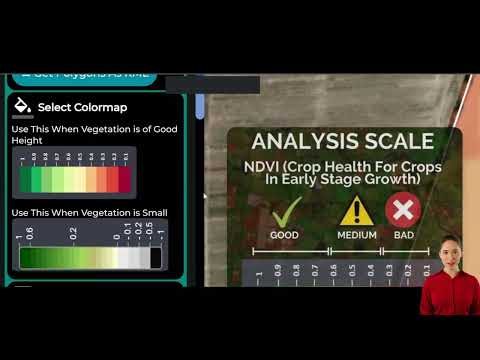Federal Court Denies Urgent Reinstatement of Oversight Agency Officials in Washington: A Deep Dive into Government Watchdog Dynamics
“8 former inspectors general were denied immediate reinstatement in a rare federal court ruling favoring the administration.”
In a significant development that has sent ripples through the corridors of power in Washington, a federal court has denied the urgent reinstatement of eight former inspectors general, marking a rare victory for the current administration amidst ongoing federal workforce changes. This ruling has far-reaching implications for federal oversight agencies, congressional oversight, and the delicate balance of executive branch powers. As we delve into this complex issue, we’ll explore its impact on key departments, including Agriculture, Labor, and Veterans Affairs, and examine the broader landscape of government watchdog reinstatement processes.
The Court Ruling: A Closer Look
The ruling, handed down by Judge Ana C. Reyes of the U.S. District Court in Washington, represents a significant moment in the ongoing saga of federal agency purges and legal challenges. Let’s break down the key aspects of this decision:
- Denial of Immediate Reinstatement: The court refused to grant an emergency request for the immediate reinstatement of eight former inspectors general who were fired by the previous administration.
- Procedural Criticisms: Judge Reyes strongly criticized the plaintiffs’ lawyers for their approach, citing concerns about the urgency of the request and the manner in which the case was presented.
- Ongoing Case: While denying immediate action, the judge allowed the case to proceed on a less urgent schedule, leaving the door open for further legal developments.
This ruling underscores the complexities surrounding the inspector general removal process and highlights the challenges faced by federal oversight agencies in navigating the current political climate.
The Role of Inspectors General in Federal Oversight
To understand the significance of this court decision, it’s crucial to grasp the vital role that inspectors general play in the federal government. These officials serve as watchdogs within their respective agencies, responsible for:
- Monitoring for fraud, waste, and abuse
- Conducting independent audits and investigations
- Ensuring compliance with laws and regulations
- Promoting efficiency and effectiveness in government operations
The removal of these officials raises serious questions about the continuity of oversight and the potential impact on government accountability.
Departments Affected and Broader Implications
“The case impacts key departments including Agriculture, Labor, and Veterans Affairs, affecting multiple federal oversight agencies.”
The court’s decision has significant ramifications for several critical federal departments:
- Department of Agriculture: Oversight of agricultural programs and food safety initiatives may be affected.
- Department of Labor: Monitoring of workforce programs and labor law enforcement could face challenges.
- Department of Veterans Affairs: Scrutiny of veterans’ benefits and healthcare services might be impacted.
- Department of Health and Human Services: Oversight of public health programs and healthcare initiatives could be affected.
- Small Business Administration: Monitoring of small business support programs may face disruptions.
These departments play crucial roles in the day-to-day lives of millions of Americans, making effective oversight paramount. The absence of dedicated inspectors general could potentially lead to reduced accountability and increased risk of mismanagement.
The Legal Landscape: Temporary Restraining Orders and Federal Court Challenges
The case brings to light the intricacies of urgent federal court cases, particularly those involving temporary restraining orders (TROs). Key points to consider include:
- The plaintiffs’ 21-day delay in filing for a TRO was heavily criticized by Judge Reyes.
- The court’s limited resources and the need to prioritize truly urgent matters were emphasized.
- The distinction between different types of federal officials and their removal processes was highlighted.
This ruling serves as a reminder of the complexities involved in navigating the federal court system, especially in cases involving high-level government officials.
Congressional Oversight and Executive Branch Powers
The case touches on the delicate balance between congressional oversight of federal agencies and executive branch powers. Key considerations include:
- The role of Congress in overseeing inspector general appointments and removals
- The extent of executive authority in managing federal agencies
- The potential impact on the independence of oversight bodies
As this case unfolds, it may set important precedents for how these relationships are managed in the future.
The Evolving Landscape of Federal Workforce Management
This court ruling is part of a broader trend of changes in federal workforce management. We’re seeing:
- Increased scrutiny of agency leadership appointments
- Debates over the balance between political appointees and career civil servants
- Questions about the long-term stability of federal agencies amidst administration changes
These developments have significant implications for the continuity and effectiveness of government operations.

The Role of Technology in Modern Government Oversight
As we consider the challenges facing federal oversight agencies, it’s worth noting the increasing role of technology in government operations and accountability. Advanced tools and platforms are becoming essential for effective monitoring and management across various sectors, including agriculture.
For instance, companies like Farmonaut are at the forefront of integrating technology into agricultural oversight and management. While not directly involved in federal oversight, their innovative approaches to satellite-based farm management and AI-driven advisory systems showcase the potential for technology to enhance transparency and efficiency in sectors crucial to government oversight.
To explore how technology is transforming agricultural management, check out Farmonaut’s web app:
For developers interested in integrating agricultural data into their systems, Farmonaut offers an API:
For detailed documentation on using the API, visit:
The Impact on Agricultural Oversight and Management
Given the court ruling’s impact on the Department of Agriculture, it’s worth considering how modern agricultural management tools can support oversight efforts. While not a replacement for federal inspectors general, technologies like those offered by Farmonaut can provide valuable data and insights for agricultural monitoring and decision-making.
This video demonstrates how advanced agricultural solutions can contribute to precision crop area estimation, a crucial aspect of agricultural oversight and management.
Comparative Timeline of Federal Oversight Agency Events
| Date | Event Description | Affected Department/Agency | Legal/Administrative Outcome |
|---|---|---|---|
| Early 2023 | Initial removal of inspectors general | Agriculture, Labor, Veterans Affairs, Health and Human Services, Small Business Administration, Defense, State, Education | Vacancies in key oversight positions |
| Mid 2023 | Filing of lawsuit by former inspectors general | All affected departments | Legal challenge initiated |
| Late 2023 | Federal court ruling by Judge Ana C. Reyes | All affected departments | Denial of immediate reinstatement; case allowed to proceed on slower timeline |
| 2024 (Potential) | Further legal proceedings | All affected departments | To be determined |
The Importance of Technological Innovation in Government Oversight
As we navigate the complexities of federal oversight and agency management, it’s clear that technological innovation plays an increasingly vital role. While tools like those offered by Farmonaut are primarily designed for agricultural management, they exemplify how data-driven approaches can enhance transparency and efficiency across various sectors.
For instance, satellite-based monitoring and AI-driven analytics could potentially support oversight efforts by providing:
- Real-time data on agricultural activities and resource utilization
- Predictive insights for risk assessment and resource allocation
- Enhanced traceability in agricultural supply chains
To explore how these technologies work in practice, consider checking out Farmonaut’s mobile applications:
The Future of Federal Oversight and Agency Management
As we look to the future, several key questions emerge regarding federal oversight and agency management:
- How will the balance between executive authority and congressional oversight evolve?
- What role will technology play in enhancing transparency and accountability in government operations?
- How can agencies maintain continuity and effectiveness amidst political changes?
While the current court ruling focuses on the immediate issue of inspector general reinstatement, it opens up broader discussions about the future of federal oversight and the tools and processes needed to ensure effective governance.
This tutorial on interpreting satellite data showcases how advanced technologies can provide valuable insights for management and oversight purposes.
The Role of AI in Modern Governance and Oversight
Artificial Intelligence (AI) is increasingly playing a crucial role in various aspects of governance and oversight. While not directly related to the court ruling, understanding the potential of AI in these areas can provide valuable context for the future of federal agency management.
This video explores the role of AI in agriculture, demonstrating how advanced technologies can support decision-making and resource management in critical sectors.
Ensuring Transparency and Accountability in the Digital Age
As we’ve seen throughout this discussion, the challenges facing federal oversight agencies are complex and multifaceted. While legal battles and political considerations play a significant role, it’s clear that technological innovation will be crucial in shaping the future of government accountability and transparency.
For those interested in supporting innovation in this space, consider exploring opportunities to contribute to the development and adoption of advanced technologies in governance and oversight. For instance, Farmonaut offers an affiliate program that allows individuals to promote sustainable agricultural practices while earning income:
Earn With Farmonaut: Affiliate Program
Earn 20% recurring commission with Farmonaut’s affiliate program by sharing your promo code and helping farmers save 10%. Onboard 10 Elite farmers monthly to earn a minimum of $148,000 annually—start now and grow your income!
Conclusion: Navigating the Complexities of Federal Oversight
The federal court ruling denying urgent reinstatement of oversight agency officials in Washington represents a significant moment in the ongoing evolution of government watchdog dynamics. As we’ve explored, this decision touches on a wide range of issues, from the legal intricacies of temporary restraining orders to the broader implications for federal workforce management and agency oversight.
Key takeaways include:
- The importance of procedural considerations in federal court cases
- The ongoing tension between executive authority and congressional oversight
- The potential impact on key departments such as Agriculture, Labor, and Veterans Affairs
- The growing role of technology in enhancing transparency and efficiency in government operations
As this case continues to unfold, it will undoubtedly shape the future of federal oversight agencies and the broader landscape of government accountability. Stakeholders across the political spectrum will be watching closely to see how these dynamics evolve and what precedents may be set for future administrations.
In an era of rapid technological advancement and changing political landscapes, the challenge of maintaining effective oversight while balancing various interests remains more crucial than ever. As we move forward, it will be essential to leverage innovative tools and approaches to ensure transparency, efficiency, and accountability in our federal agencies.

FAQ Section
Q1: What was the main outcome of the federal court ruling?
A1: The federal court denied immediate reinstatement to eight former inspectors general who were seeking to return to their positions. The judge allowed the case to proceed on a slower timeline but criticized the urgency of the request.
Q2: Which departments were affected by this ruling?
A2: The ruling impacted several key departments, including Agriculture, Labor, Veterans Affairs, Health and Human Services, and the Small Business Administration, among others.
Q3: What is the role of inspectors general in federal agencies?
A3: Inspectors general serve as internal watchdogs within federal agencies, responsible for monitoring fraud, waste, and abuse, conducting independent audits and investigations, and ensuring compliance with laws and regulations.
Q4: How might this ruling affect government oversight?
A4: The ruling could potentially impact the continuity and effectiveness of oversight in various federal agencies, raising questions about accountability and the balance between executive authority and congressional oversight.
Q5: What role does technology play in modern government oversight?
A5: While not directly addressed in the court ruling, advanced technologies such as satellite monitoring, AI-driven analytics, and blockchain are increasingly important in enhancing transparency, efficiency, and accountability in government operations and oversight.






